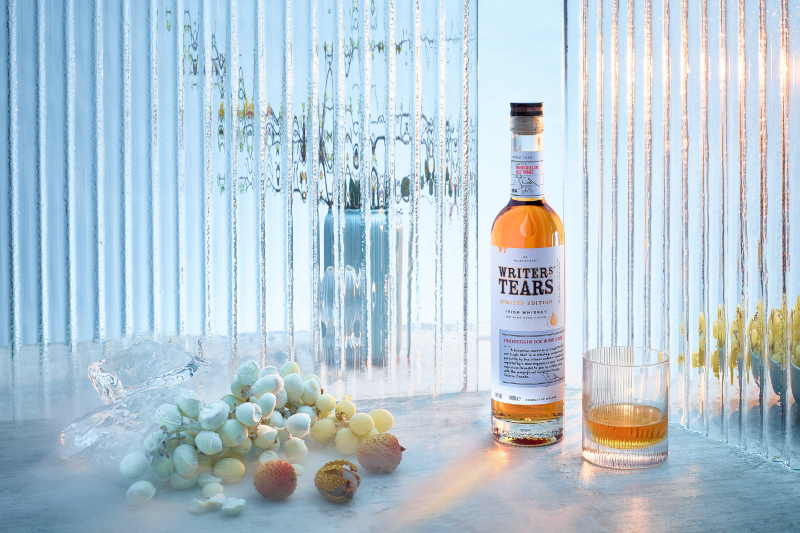
Carlow, Ireland’s Walsh Whiskey isn’t satisfied with simply creating super premium whiskeys like Writers’ Tears and The Irishman. Founders Bernard and Rosemary Walsh are on a quest to produce the perfect taoscán (tay-scawn) — drop of whiskey.
The distillery’s latest venture toward this end took them to Niagara, Ontario. There, Walsh worked with Inniskillin Winery, a leading producer of icewine. After touring Inniskillin’s vineyard and sampling wines, Walsh selected 12 hogshead casks to finish the latest batch of Writers’ Tears. The now released limited-edition Writers’ Tears — Icewine Cask Finish is an exclusive, first-ever, triple-distilled vat of single pot still and single malt whiskeys, finished for 12 months in icewine hogsheads, before being bottled at 46% ABV.
What is ice wine? Icewine (or ‘Eiswein’) is a type of sweet wine, originally made in Germany and Austria, with recent inroads into Canada and China. Inniskillin is Canada’s original estate winery and leading producer of icewine.
Working with then head winemaker, Bruce Nicholson (now retired), the Walshes selected casks originally coopered by the Berthomieu Cooperage (est. 1906) in France. The dozen selected hogsheads were disgorged of Inniskillin Icewine in March 2020 and shipped to Ireland where they were filled with Writers’ Tears – Copper Pot in May. Inspected at monthly intervals, the first Irish whiskey ever finished in icewine casks was bottled 12 months later, in May 2021.
Related Guides
“I first tasted icewine in 2011, so plans for this expression have been fermenting in my head for some time,” Bernard Walsh, Walsh Whiskey Managing Director, said, in a press release. “With our core Writers’ Tears – Copper Pot expression we have a unique combination of predominantly spicy, single pot still married with single malt Irish whiskey. This core expression gets a whole new dynamic complemented by the intense natural sweetness imparted by Inniskillin’s show-stopping icewine.”
According to official tasting notes, the whiskey’s aroma has peach and apricot over a unique pot still spice. On the palate, it has floral notes and nutty oak with a finish redolent of a fruit compote featuring mango and lychee.
Just 3,500 bottles of Writers’ Tears — Icewine Cask Finish are set to be released to Canada, Ireland, and the United States, retailing for a suggested $85 in the U.S. The whiskey is set to be on shelves this November.
Read More: Stranahan Whiskey Barrels Double as Wagner Custom Skis



